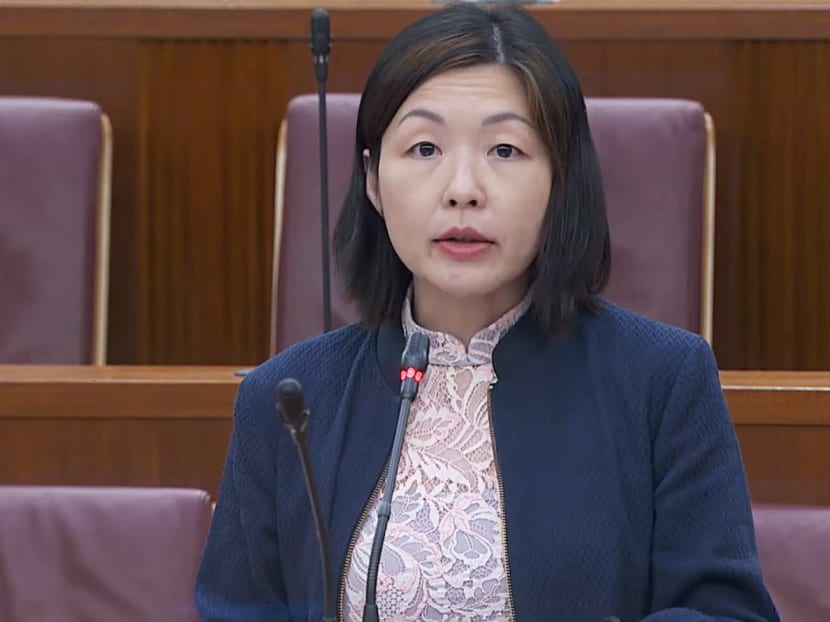Rare Disease Fund should cover more illnesses, benefit more people: MP Cheryl Chan
SINGAPORE — Member of Parliament (MP) Cheryl Chan has called for more support for those with rare diseases, noting that a fund helping those with rare conditions has benefited only seven people — out of eight who applied — since it was launched two years ago.

MP for East Coast GRC Cheryl Chan said the Rare Disease Fund should cover more illnesses and benefit more people.
- The Rare Diseases Fund (RDF) was established to grant financial assistance for those with rare diseases
- East Coast MP Cheryl Chan said that there is a potential to increase the uptake of the RDF
- Senior Minister of State Koh Poh Koon said that the authorities are looking to increase the scope of the RDF, but this will be “very difficult” without more donations
SINGAPORE — Member of Parliament (MP) Cheryl Chan has called for more support for those with rare diseases, noting that a fund helping those with rare conditions has benefited only seven people — out of eight who applied — since it was launched two years ago.
She added that the number of people who have benefited from the Rare Disease Fund (RDF) is small compared to the more than 2,000 Singaporeans who have rare diseases, and asked if more could be done to reach out to potential beneficiaries and expand the scope of the fund to cover more illnesses.
The East Coast Group Representation Constituency MP was speaking on Monday (Aug 2) during an adjournment motion in Parliament, where she sought to explore ways to increase the uptake of the RDF so that more people can benefit from it.
Established by the Ministry of Health and the SingHealth Fund in July 2019, the RDF provides additional financial assistance to those with rare diseases who still require help after benefiting from existing government measures.
Under the fund, the Government will provide a matching grant of S$3 for every S$1 in public donations.
This, said Senior Minister of State for Health Koh Poh Koon in response to Ms Chan’s speech, is because the Government shares her concern for individuals with rare diseases where medication is very costly and required for life.
He clarified that, among other things, what Ms Chan described is not a situation in which eligible patients are not applying for the fund due to a lack of awareness.
Dr Koh also explained that the RDF supports high cost, life-saving treatments for very rare genetic conditions where the medications:
-
Have a proven therapeutic efficacy
-
Are able to substantially extend a patient's lifespan and maintain quality of life as a direct consequence of its use
-
Are reasonably priced when compared to prices in other countries
Due to these considerations, not all rare diseases can be eligible for the fund, as some do not have treatments that can meaningfully extend a patient's life expectancy, for instance.
Dr Koh, who is also a colorectal surgeon, added that the authorities are looking to include three more diseases and five more medicines for eligibility under the RDF, but this will be “very difficult” without more donations.
POTENTIAL FOR MORE TO BENEFIT: CHERYL CHAN
Ms Chan said that with only eight applicants so far, there is a potential to increase the uptake of the RDF by raising more awareness about it.
She said that groups such as Rare Disorders Society (Singapore) and Rainbow Across Borders help raise awareness on the support available to those with rare diseases, but asked if more could be done.
“(The benefits of the RDF) could be more widely shared through the community level and family touch points like general practitioners, pediatricians and polyclinics,” she said.
She added that with only four rare diseases eligible for the RDF, those with rare diseases outside of the four face “the strictest of processes and a flat rejection”.
The four diseases eligible under the fund are: Primary bile acid synthesis disorder, Gaucher disease (Type 1 or 3), Hyperphenylalaninaemia due to tetrahydrobiopterin (BH4) deficiency and Pompe’s Disease.
While it might not be feasible to include all rare diseases for eligibility — there are presently 6,000 types of rare diseases — she said perhaps more could be done to “expand the scope of current conditions”.
She proposed coverage for two conditions: Neuroblastoma and Krabbe disease, which are among the 10 most common rare diseases afflicting young children in the world today.
Neuroblastoma is a common childhood cancer found in children under the age of five, which affected an estimated 15 children from March 2017 to February 2019 here.
Ms Chan added that the cost of treatment goes upwards of S$1 million, with some of the specialist treatments not available in Singapore.
Krabbe disease is a hereditary genetic disorder and 43 Singaporeans are known to have it.
She added that there are only six drugs eligible for the RDF, a small number compared to the 22 novel drugs to combat rare diseases approved by the US Food and Drug Administration.
Acknowledging that funding will be integral in expanding the scope of the RDF, Ms Chan asked if there could be a more sustainable model for community donations.
For instance, she asked if corporate donations that span over a period of five to 10 years can be explored with differentiated tax treatment.
MORE TO BE DONE, BUT TANGIBLE PROGRESS MADE: KOH POH KOON.
Responding to Ms Chan, Dr Koh said that there are three common misconceptions about the RDF.
First, it is not the case that eligible patients are not applying for the RDF because there is not enough awareness about the RDF, as those with rare diseases “generally seek care from the public sector” due to the high costs and can therefore be easily identified and invited to apply.
He added that some patients with rare diseases have insurance coverage, or alternative financial means and need not apply for RDF grants.
For those in financial need, medical social workers in public healthcare institutions and the patient's specialists will assist the patient to apply for RDF assistance.
Second, when the RDF was launched in 2019, it was already established that there were up to 2,000 patients with rare diseases here.
However, the majority will not qualify for treatment as they have conditions where no treatments are available, and their life expectancy may be limited with poor quality of life, he said.
Some patients also had conditions where treatments were relatively low cost and hence could already be supported under existing funds.
He added that the authorities anticipated that there would be 15 medicines that needed RDF support “based on experiences of equivalent rare disease funds from overseas” and that so far, they had covered six medicines.
Third, listing more rare diseases and medicines on the RDF should only happen if the disease has effective treatments that can meaningfully extend life expectancy, he said.
“Adding more medicines does not in itself enable more patients to be helped, especially if the RDF does not have sufficient funds to support more patients for the entire lifetime of their treatment costs,” he said.
For the example of Krabbe disease which Ms Chan raised, Dr Koh said that there are presently no treatments available to slow disease progression, with most patients succumbing at two years old.
“The current available medicines are for palliative and supportive care only, which would not fulfil the inclusion criteria for RDF of being able to substantially extend a patient’s lifespan,” he said.
Instead, patients who require assistance are already supported by mainstream financing schemes such as subsidies and MediSave, MediShield Life and MediFund.
He said that the RDF made payouts of around S$1 million in the last financial year, and is projected to make payouts of S$1.5 million this financial year.
“This is a large sum for a very small number of patients,” he said.
The “crux” of what will allow the fund to help more patients is raising more donations, which the RDF committee and its secretariat at KK Women's and Children's Hospital are "doubling up their efforts" to do so, Dr Koh said.
He added that at present, the RDF committee has a pipeline of five other medicines for three more rare diseases that stand ready to be added to the RDF list once sufficient funds are raised.
“Without more donations, it will be very difficult for the RDF to list more medicines or to support new patients,” he said.
“I encourage everyone to donate generously to this cause, so that more can benefit from the RDF.”








